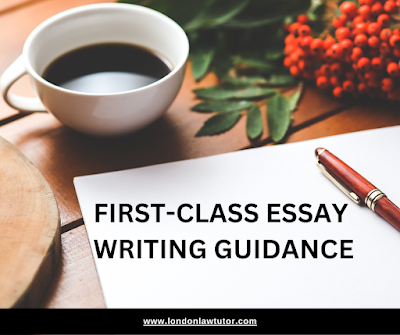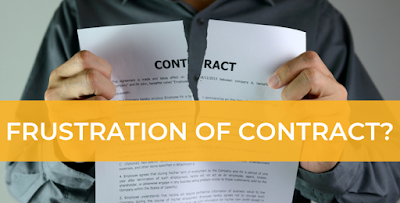A first-class essay structure
What differentiates a first-class essay is its precision, coherence, balance, and, crucially, flow.
In school, you may be taught a certain way to write your essays. Understanding the reasons behind these structures is essential to writing a first-class essay, allowing you to adapt these structures to suit your response to a particular question.
While there is no one-size-fits-all essay structure, there are certain feature of a first-class essay. Devising these structures requires one to strategically think about the following non-exhaustive points:
• (a) what is the question REALLY asking (many got this wrong at the outset);
• (b) what are my strongest points and counterarguments;
• (c) are these points distinct or overlapping (and if they are overlapping, should I collapse them into my main point or develop them as a separate point); and
• (d) am I able to properly rebut or address the counterarguments.
Now, we turn to understanding the purpose of the essay structure, and importantly, the reasons behind the structure.
1. Introduction
The introduction is the most important paragraph and serves three functions. First, it unpacks the question, highlighting the key tensions in the essay. Second, it states the author’s stand in response to the question prompt. Third, it captures the readers’ attention, if it is well-drafted and relevant to the question. In essence, a good introduction should allow your reader to form a certain expectation of what you’ll address and the direction you will take. Reading that first paragraph alone should give the reader a flavour of the entire essay.
Here are the constituents of an introduction:
- Hook: Find any relevant interesting statistic or fact. Otherwise, it is perfectly acceptable to start the essay with a more generic and ancillary fact. But don’t overdo it to the point of distracting the marker.
- Bridge: After giving a hook, it is important to ease into and introduce the question using a “bridge”. Without which, the hook may seem out of place and abrupt. Link the hook to the question prompt.
- Defining / Unpacking Question: There are often key terms that require you to define the scope. Here, you may also touch upon what you think is the central tension in the question. Do not repeat the question verbatim.
- Overview of arguments: In 2 to 3 sentences, mention what are the points in favour of your stand and your reservations (i.e., counterarguments). This is essential in signalling to the reader what you will be discussing.
- Thesis: State your stand.
2. Counterarguments
I prefer addressing the counterarguments first because it flows better. Once the counterargument has been laid out, I will follow up with a rebuttal to either discredit or concede the counterargument and all the points forthwith will be in favour of my thesis.
It is important to use a genuine counterargument instead of a strawman argument. Acknowledge the strongest point detractors can have against your thesis. Some may think that acknowledging a genuine counterargument contradicts their stand. However, the value in acknowledging a counter-argument is to buttress your credibility, showing that you are not biased but are fair-minded. To prevent yourself from contradicting your stand, this is why it is important to ADDRESS or REBUT the counterargument you have acknowledged.
We turn now to the next section: the Rebuttal.
3. Rebuttal
A rebuttal is technically a “supporting argument” (see section 4 below). However, it differs from the other supporting arguments in one crucial aspect. A rebuttal must be addressed directly to the counterargument; a supporting argument can be addressed to any other points independent of the counterargument.
In other words, there are two ways to support your stand. First, via a supporting argument, which is a free-standing independent point. Second, via a rebuttal, which is by addressing the counter-argument. The latter is the focus of this section.
If the counterargument is a point that is untrue, discredit it. Otherwise, if the counterargument holds water, concede its strength but limit its applicability or highlight certain qualifications or reservations. When done correctly, addressing the opposition’s most powerful counterargument will buttress your thesis substantially, providing not only merit but also credibility.
4. Supporting argument
The supporting argument are independent points to support your thesis. You may write 2 or 3 supporting arguments.
Here are the constituents of a supporting argument, which are applicable to the rebuttal and counterargument (see sections 2 and 3 above):
- Topic Sentence: A short simple sentence that states the main point of the paragraph. A good topic sentence is precise and concise, and importantly, tells us how it relates to the question. This gives readers the gist of the paragraph from the get-go.
- Explanation: Explain the topic sentence.
- Example: Use at least 1 example. It helps to illustrate your point.
- Explaining (the example): After citing an example, it is very important to follow it up with an explanation of HOW that example supports or illustrates the point made in the topic sentence.
- Link: Having delved into the details, it is necessary to zoom out on the big picture and focus on how the paragraph supported your topic sentence. Links need not be just a mechanistic recantation of the topic sentence. Feel free to paraphrase slightly without losing the essence.
5. Conclusion
Now that the essay is complete, you will need one final paragraph to rein in loose ends. For longer papers, some readers may read the introduction and conclusion to get a gist of the entire essay before zooming into individual paragraphs. Therefore, the conclusion should not just mirror the introduction, but crystallise the essence of the essay and provide some thoughtful reflections.
Here are the key constituents of a conclusion
- Reiterate stand: State your stand clearly and concisely.
- Summarise arguments: Remind the readers again what are your main arguments in brief. Also mention the counterargument and how it has been discredited or qualified by the rebuttal.
- Insight / Reflection: This should crystallise the essence of the essay, its key tensions, and the points you have made. It may come in the form of a call to action, a comment, a prediction etc. However, do not include a new point at this juncture because new points should have been elaborated in full in the body paragraphs.
The hallmark of a first-class essay is, ultimately, that it comprehensively answered the question asked. The structure I have described above is merely a guide to be adapted and applied to the specific requirements of the question. That is no right or wrong structure. However, there are structures that better answer the question than others. The only way to get it right is by practising.
The writer, Leon, is a First Class LLM graduate from King's College London and a future trainee solicitor at Gibson, Dunn and Crutcher UK LLP.
Law Tutors Online, UK Law Tutor, UK Law Notes, Manchester Law Tutor, Birmingham Law Tutor, Nottingham Law Tutor, Oxford Law Tutor, Cambridge Law Tutor, New York Law Tutor, Sydney Law Tutor, Singapore Law Tutor, Hong Kong Law Tutor, London Tutors, Top Tutors Online and London Law Tutor are trading names of London Law Tutor Ltd. which is a company registered in England and Wales. Company Registration Number: 08253481. VAT Registration Number: 160291824 Registered Data Controller: ZA236376 Registered office: Berkeley Square House, Berkeley Square, London, UK W1J 6BD. All Rights Reserved. Copyright © 2012-2024.


